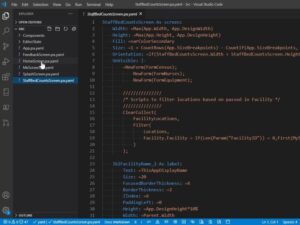Jack Wallen posits a single event in 2020 is critical to the future of Linux desktop success (especially in the enterprise), and that anyone paying attention will know what it is.

Image: iStockphoto/Elena Kalashnik
If I reveal the Linux desktop information right from the jump, that would be in poor form. After all, I have to build up tension, add a little drama, and make you work for it. This is open source we’re talking about–you’re used to waiting for the payoff. You’ve been using Linux as your desktop operating system for decades, all the while wondering why the masses have yet to adopt the platform you know is ideal for the average user. Let’s get to the topic at hand before you revolt. (Hint: Linux has been working toward this moment for a very long time, and it’s quite obvious to anyone who has been paying attention.)
Is it the release of that perfect desktop distribution? Nope.
Maybe it was something Linus Torvalds said? Not one word.
Is it a new bit of code added to the kernel to give the Linux desktop unheard of performance? Nada.
That one killer app? Nyet.
A celebrity was spotted using Linux? As if.
Some wisdom a journalist or blogger dropped? I wish.
SEE: Linux service control commands (TechRepublic Premium)
In a word: Lenovo
The moment to which I’m referring is when computer giant Lenovo began selling hardware with Linux preinstalled. This wasn’t a major company dipping its toes in the water to sell a single laptop with an outdated version of Ubuntu–this was Lenovo throwing serious support into the mix, even going as far as posting a What is Linux? page on its site. Consumers can now purchase ThinkPad P1 Gen 2, ThinkPad P53, and ThinkPad X1 Gen 8 systems with Linux. That’s serious. When you couple that with Dell’s well-known support for the open source operating system, all of a sudden, the game has changed.
Don’t get me wrong, there have been plenty of companies that sell Linux preinstalled on hardware; in fact, if it weren’t for System76, we probably wouldn’t be where we are. That company has, time and again, proven that Linux is a viable solution for businesses and consumers alike. I am convinced that if System76 had not continued providing high-quality systems, Linux on the desktop wouldn’t be where it is today.
Having a “big box” manufacturer like Lenovo ramps it up beyond anything we could have expected. This is the stuff of dreams for Linux, and it cannot be heralded enough.
Although this move by Lenovo is important for consumers, where it really hits home is within the realm of businesses. One thing that has held a lot of businesses back from using Linux is having a large company at the ready for support; with Lenovo, that concern is a thing of the past. Businesses can now purchase Linux laptops and desktops and know enterprise-level support for that hardware is just a phone call away.
The fun doesn’t end there.
Remember, Lenovo made a significant commitment to open source back in 2015 and then re-upped it in 2017. This year, Igor Bergman, vice president of PCSD Cloud & Software at Lenovo, said, “Our goal is to remove the complexity and provide the Linux community with the premium experience that our customers know us for. This is why we have taken this next step to offer Linux-ready devices right out of the box.”
So this isn’t just about expanding a customer base within the realm of enterprise businesses, it’s about giving back to a community–even if the “giving back” has an associated cost. The price associated with Lenovo’s giving back is important. Why? Because it means (as Bergman said), Linux users can count on receiving the same quality experience on Lenovo hardware that Windows users enjoy. The importance of that cannot be stated enough.
For years, Linux users have been accustomed to purchasing hardware and having to install their operating system of choice–often struggling to get everything working properly. Although Linux hardware support has come a very long way (I rarely have issues installing Linux on modern hardware), for the average user, installing an operating system is well beyond their pay grade and knowledge–especially when issues with wireless chips come into play. With Lenovo, that ends. Linux users can purchase hardware without having to install an operating system and knowing that everything will work out of the box, which is guaranteed by the Linux Certification that Lenovo is attaching to the hardware.
That guarantee is a big jump ahead for Linux, and one that wouldn’t have happened without Lenovo putting its support behind the open source platform.
Even with 2020 being the year that seemed to hate humanity, at least there were bright spots. For Linux, no spot was brighter this year than Lenovo putting all of its hats into the Linux ring. To Lenovo, I offer up a hearty, “Well done, and thank you.” I hope the entire Linux community will do the same.
Subscribe to TechRepublic’s How To Make Tech Work on YouTube for all the latest tech advice for business pros from Jack Wallen.
Also see
Source of Article



